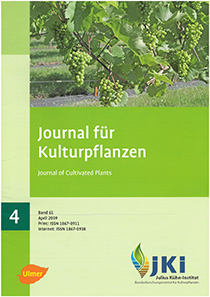Use of Copper Containing Plant Protection Products in Germany
Keywords:
Organic farming, plant protection product, copperAbstract
The estimation of the applied quantity of copper pesticides in Germany in 2008 has shown that the site related extension of organic farming increased copper use by 10 tonnes to 34.1 tonnes per year as compared to 2005. However, total entries originating from pesticide applications of non-organic farming are about 10 fold, i. e. about 289.5 tonnes per year. Comparing between pesticide applications on various crops, highest copper applications have been registered for hop (4–7 kg/ha and year). As an example yearly copper applications could be calculated for the lake of Constance fruit growing region. Copper application averages 1.57 kg/ha and year for all municipalities. It may be considered that the entry through pesticides is low as compared to fertilizers (appr. 2300 tonne/ha and year) or sewage sludge (appr. 450 tonnes/ha and year). Continued application of copper pesticides at the before mentioned rates for the next 10 years would only result in a very small increase in total copper content in soil. Furthermore, the development of new low-concentrated copper pesticides could lead to a decrease of copper entries in the coming years.
DOI: 10.5073/JfK.2009.04.03, https://doi.org/10.5073/JfK.2009.04.03








